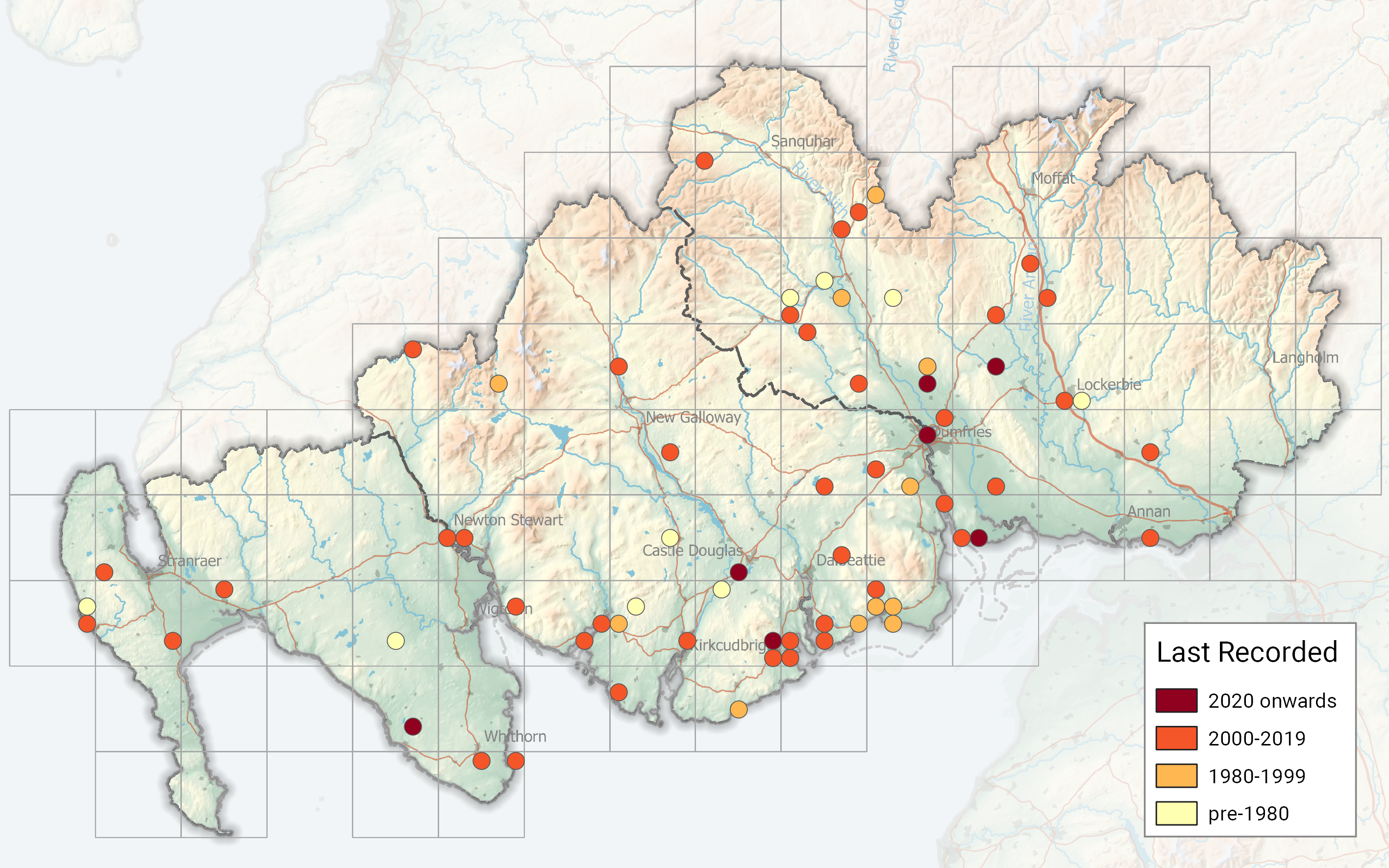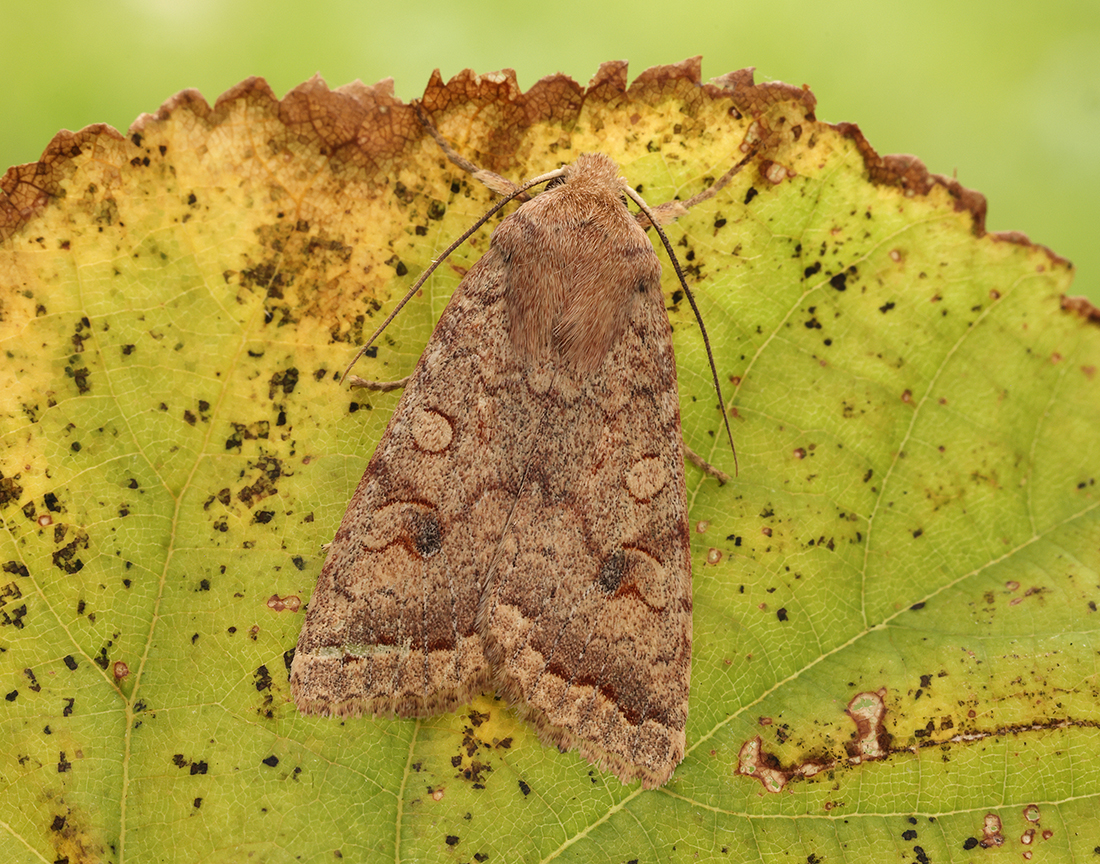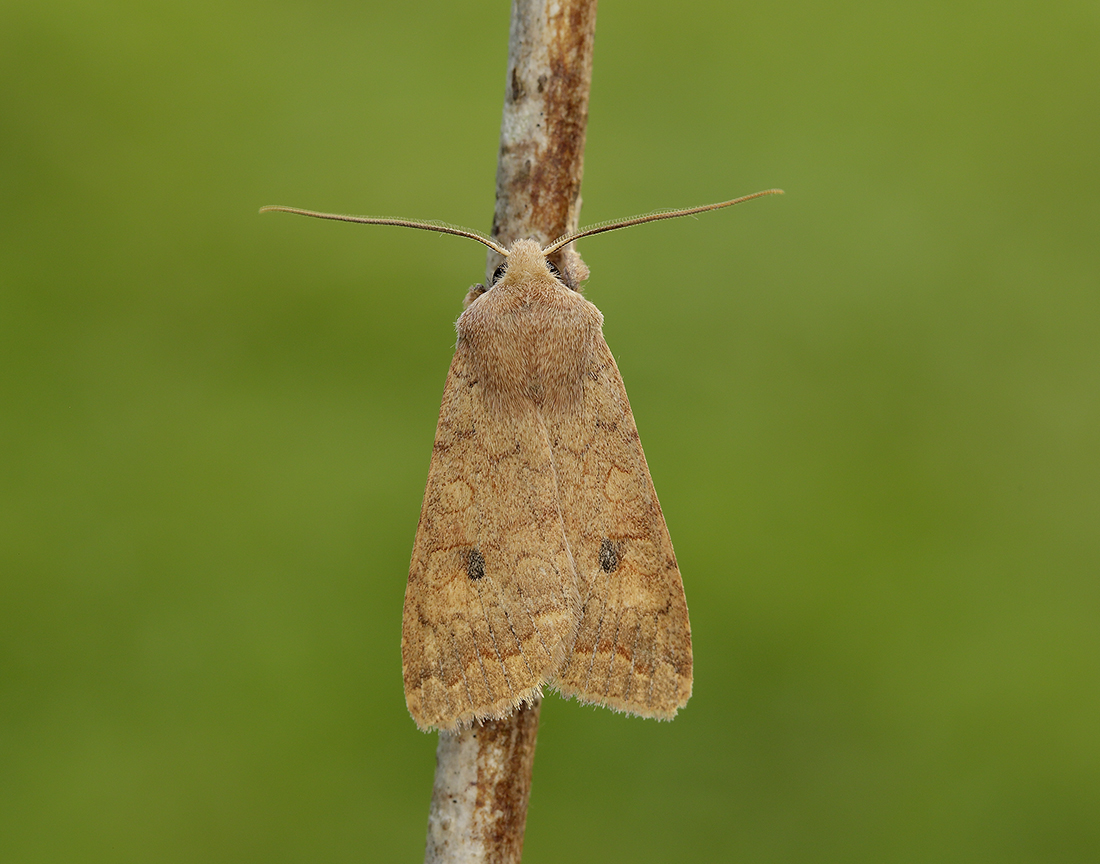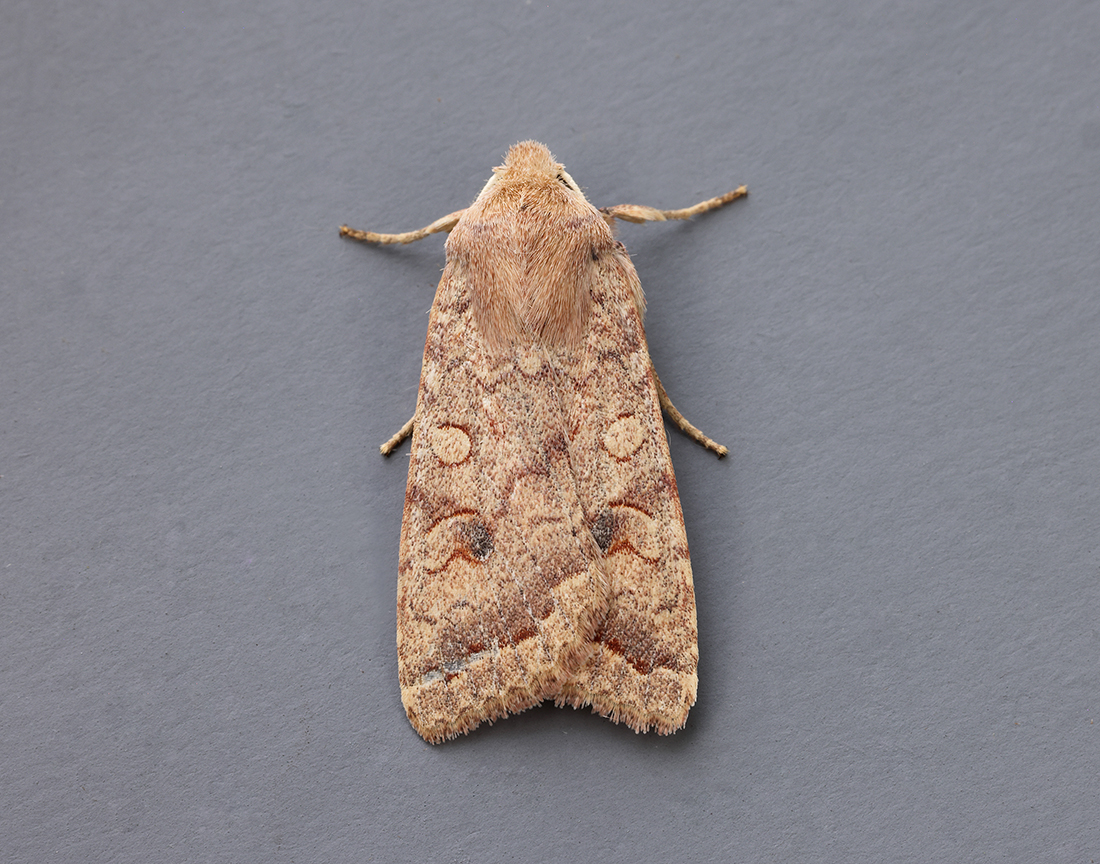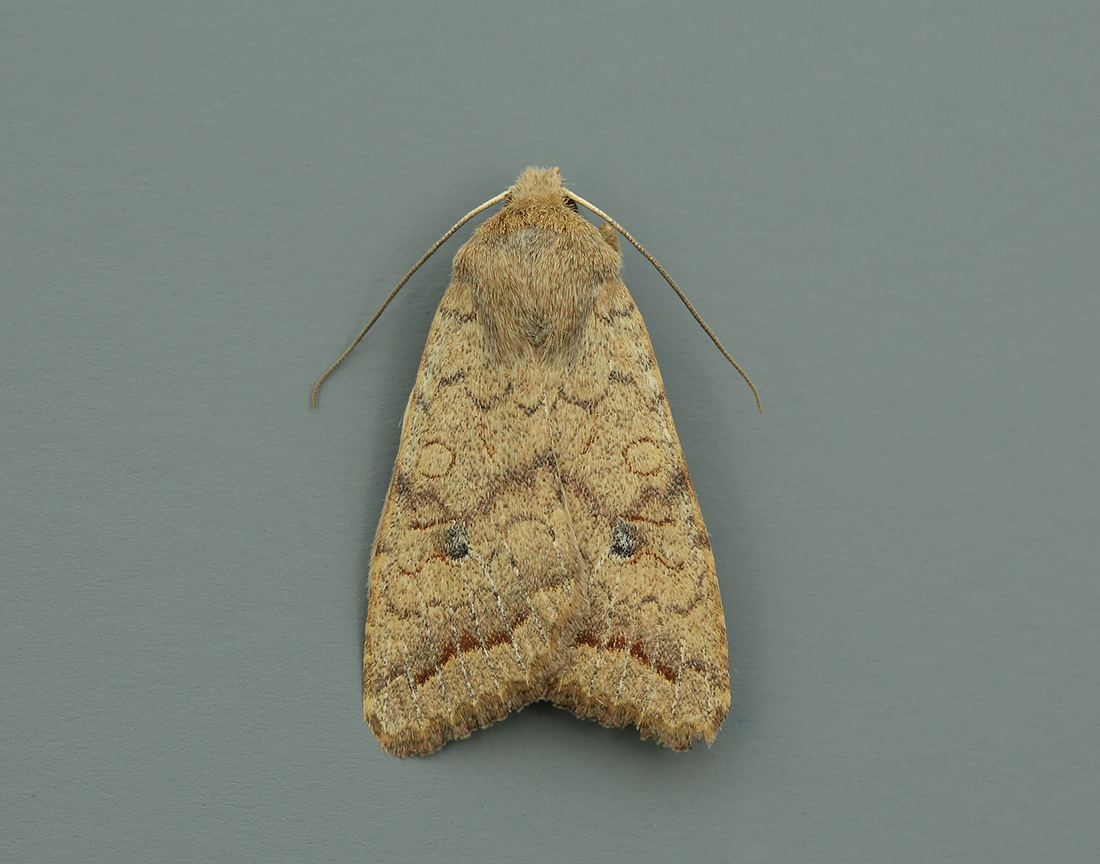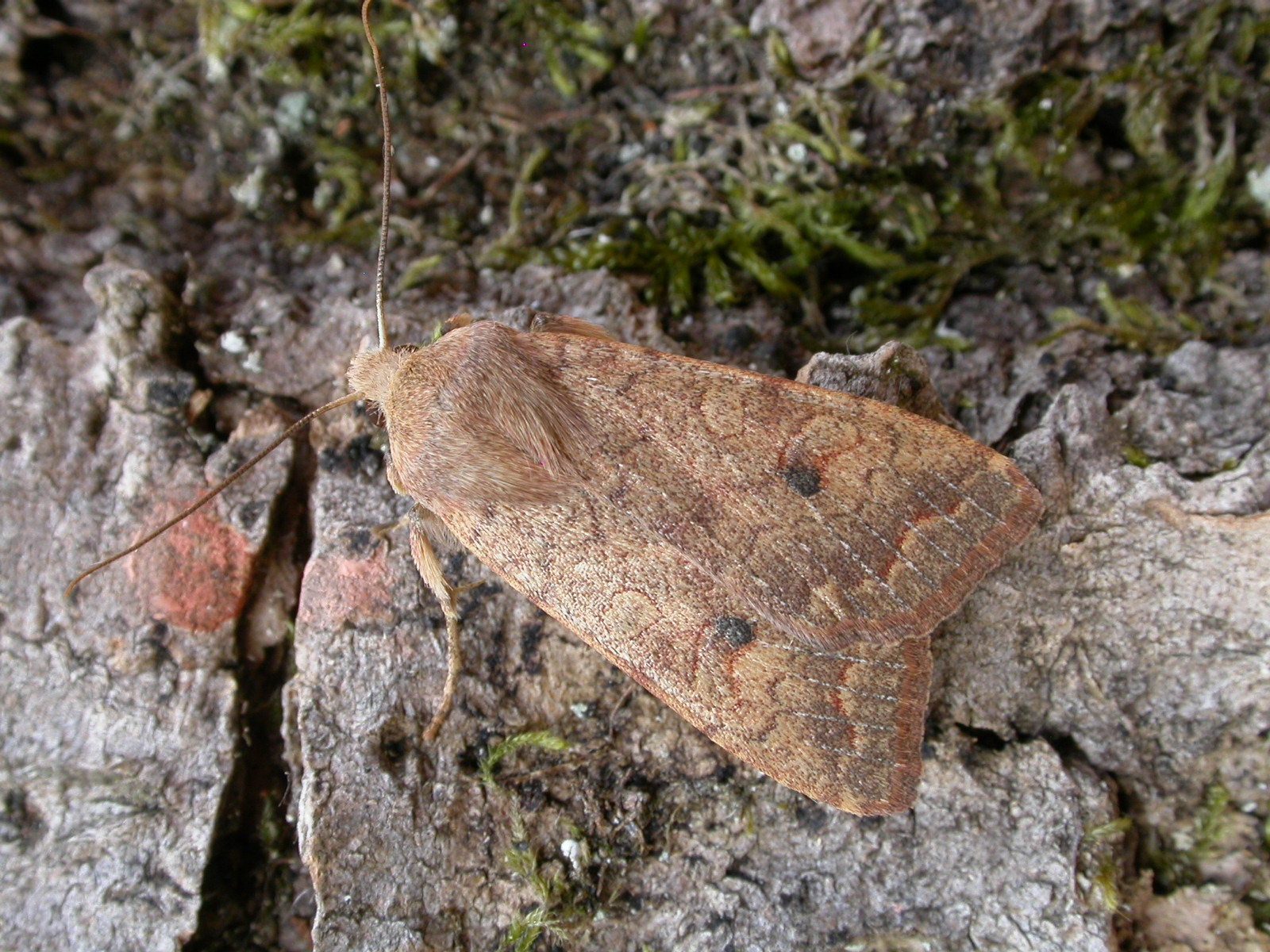Identification
Similar to Yellow-line Quaker but has a darkish mark in the trailing half of the kidney mark.
Recording Method.
Attracted to light, also comes to sugar and flowers.
Life cycle
One generation. Overwinters as an egg. Larva during April to June, with pupation about six weeks later from an underground cocoon.
Larval foodplants
Larvae feed on a range of broadleaved trees.
Habitat
Woodland, scrub, parkland and gardens.
History
Gordon (1913) had found it abundant and generally distributed in Wigtownshire. Earliest date was 7th September 1906 and 1910. William Evans received specimens from Mowat, the Killantringan lighthouse keeper, to aid his insect migration study.
Sir Arthur Duncan (1909-84) during his lifetime had found it at Closeburn, Tynron and Castlehill, Dumfries (all VC72). Archibald Russell (1944) listed it as occurring near Gatehouse of Fleet (VC73) during the years 1942-43.
During 1974-92 at Waterside Mains, Keir (VC72), Gatehouse of Fleet, Bridge of Dee and Mabie Forest (VC73) it was regularly recorded at these Rothamsted stations.
From 1992 to 2010 through personal trapping it had occurred regularly at Kirkton and Durisdeer (VC72), Merseheard RSPB and Cally Woods (VC73).
Wigtownshire has very few records: two were recorded in 1976 at Newton Stewart (RIS data) and ten specimens were trapped in Glenwhan Gardens, Dunragit in October 2010.

